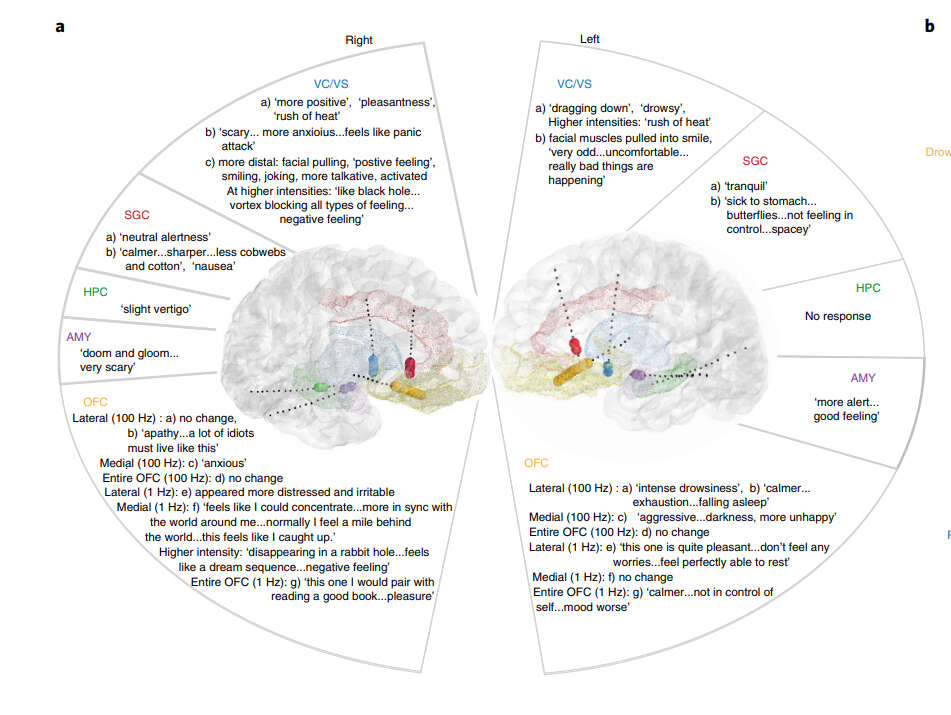- Researchers at the University of California, San Francisco, performed deep brain stimulation on a patient with major depressive disorder.
- According to the case study, the patient immediately reported a significant improvement in her symptoms; with the positive effects lasting 6 weeks.
- The team now plans to conduct a larger trial to evaluate the effectiveness of personalized deep brain stimulation in treating severe depression.
Deep brain stimulation (DBS) involves generation of electrical impulses within certain areas of the brain; using implanted electrodes. These electrical impulses help regulate abnormal electric signals within a person’s brain. The amount of stimulation is controlled by a pacemaker-like device that is surgically placed under the skin. Currently, DBS is used as a treatment for Parkinson’s disease, epilepsy, and certain movement disorders. Although over the years scientists have tested the method several times for treating depression, they are yet to achieve promising results.
According to the World Health Organization (WHO), over 264 million people globally suffer from depression. Despite effective therapeutic options, around 30% of patient don’t respond to standard depression treatments.
Now, researchers at University of California have managed to significantly alleviate symptoms of depression in a patient with major depressive disorder. They published their findings in the journal Nature Medicine.
Prior attempts to develop neuromodulation for depression have always applied stimulation in the same site in all patients, and on a regular schedule that fails to specifically target the pathological brain state. We know depression affects different people in very different ways, but the idea of mapping out individualized sites for neuromodulation that match a patient’s particular symptoms had not been well explored.
Dr. Katherine Scangos, lead researcher
Deep Brain Stimulation Gives Results Within Minutes
The patient in the case study had severe treatment-resistant depression and a family history of suicide. Moreover, the 36-year-old had suffered multiple episodes of severe depression since childhood; with her last depressive episode lasting four years.
Researchers implanted 10 electrodes within the patient’s brain. Over a period of ten days, they stimulated regions of her brain known to have an effect on mood; for up to 10 ten minutes at a time. However, they found that 90-second brain stimulation of several regions produced the most reliable results. Within 10 minutes, the patient reported a significant shift in her emotions. A set of clinical scales were used to assess the patient’s mood and depression severity throughout the study.
Stimulation of different brain regions produced different results. Some produced desirable effects, some none, and some made the patient feel worse. For example, stimulation of one region led to the patient reporting ‘tingles of pleasures’. While another area resulted in a calm feeling described as ‘like … reading a good book.’

Mental State Affects Outcome
Additionally, the researchers noticed that patient’s mental state at the initiation of the stimulation led to different responses in the same regions. For example; stimulation of the orbitofrontal cortex (OFC), while she experienced anxiety, caused her to feel positive and calm. However, stimulation of the same region, when she experienced decreased energy, resulted in worsened mood and drowsiness. The researchers were able to personalize DBS to the patient’s mood. Furthermore, the positive effects lasted for hours and her symptoms went into a 6-week long remission.
I’ve tried literally everything, and for the first few days, I was a little worried that this wasn’t going to work. But then when they found the right spot, it was like the Pillsbury Doughboy when he gets poked in the tummy and has that involuntary giggle. I hadn’t really laughed at anything for maybe five years, but I suddenly felt a genuine sense of glee and happiness, and the world went from shades of dark gray to just–grinning.
Study Patient
Researchers believe that personalized deep brain stimulation can provide an effective, alternate approach for those with severe treatment-resistant depression. The team now aims to conduct a larger trial to evaluate the effectiveness of their method.
Reference:
Scangos, K.W., Makhoul, G.S., Sugrue, L.P. et al. State-dependent responses to intracranial brain stimulation in a patient with depression. Nat Med (2021). https://doi.org/10.1038/s41591-020-01175-8




